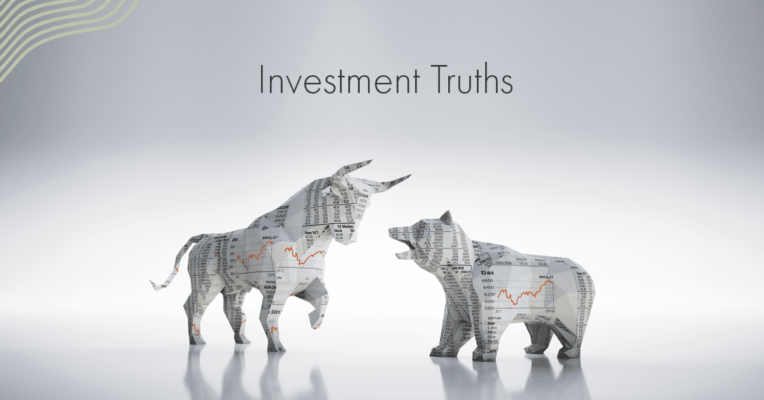When To Sell a Losing Stock
Investing is about more than growing wealth; it’s about aligning your money with what matters most to you. That’s the essence of the Personal CFO (PCFO) approach: integrating financial strategies that reflect your values, passions, and long-term goals. Within that toolkit, tax-loss harvesting can help protect your portfolio, lower your tax bill, and support a holistic plan. And it includes knowing when to sell a losing stock.
The opportunity in losses
Seeing red on an investment never feels great, but with tax-loss harvesting, it can become an opportunity. Here’s how it works:
- By selling an underperforming investment, you can realize a loss that offsets capital gains from other investments, such as an executive with many vested RSUs. That reduction in taxable gains can free up cash flow for priorities like kids’ education or charitable giving.
- If your losses exceed your gains, you can deduct up to $3,000 of ordinary income annually (or $1,500 if married filing separately). For example, an entrepreneur can use this deduction to reduce taxes after selling part of a business, then diversify his portfolio and plan his next venture with greater confidence.
- Unused losses can be carried forward to future tax years, ensuring continued tax efficiency. This is especially helpful for someone who inherits a concentrated stock portfolio and needs liquidity for future investments, such as real estate.
Recognizing and acting on these opportunities is a proactive, strategic decision that keeps you focused on long-term outcomes. And turn short-term losses into smarter positioning.
When to sell a losing stock
- Misalignment with Goals: The stock no longer aligns with your investment strategy or financial objectives. For instance, an executive with a large number of vested RSUs (the breadwinner) divests from stocks that no longer fit her family’s future-focused plan.
- Low Recovery Potential: The company’s fundamentals or market conditions suggest the stock is unlikely to recover. An entrepreneur, for example, chooses to exit positions in industries he’s no longer involved in after selling his business.
- Offsetting Gains: Harvesting losses to balance out capital gains from highly appreciated assets like RSUs, stock options, or property sales. This could be critical for someone who uses the strategy to reduce tax burdens on gains from their inherited portfolio.
Timing is critical. While year-end planning often highlights tax-loss harvesting opportunities, your Personal CFO team monitors your portfolio throughout the year to identify optimal moments to act.
The bigger picture: portfolio protection
Tax-loss harvesting works best as part of portfolio management:
- Rebalancing: Selling underperforming stocks helps you maintain your desired asset allocation. For an executive with significant RSUs, this supports diversification even as markets move.
- Diversification: Redirecting the proceeds into similar (but not identical) investments enhances diversification while adhering to IRS wash-sale rules. An entrepreneur may reinvest in private equity and growth opportunities that align with his next venture.
- Mitigating Risk: Reducing exposure to assets that no longer align with your financial plan strengthens your portfolio’s resilience. This could be vital for someone who transitions legacy holdings into a more modern, diversified portfolio.
By integrating tax-loss harvesting into a PCFO approach, you may better protect your portfolio while staying aligned with your values and goals.
Why a robo-advisor falls short with tax-loss harvesting
While robo-advisors often offer automated tax-loss harvesting, they fall short compared to the holistic approach of a Personal CFO. Here’s why:
- Lack of Personalization: Robo-advisors rely on algorithms to execute tax-loss harvesting based on predefined rules, without considering your broader financial situation. A Personal CFO, on the other hand, integrates tax-loss harvesting into your overall wealth management plan, accounting for your unique goals, values, and circumstances.
- Limited Integration Across Financial Areas: Robo-advisors focus solely on investments and may fail to coordinate with other financial aspects, such as executive compensation, real estate strategies, and estate planning. A PCFO helps align tax-loss harvesting with every component of your financial life to maximize its impact.
- Wash-Sale Rule Risks: Robo-advisors may inadvertently trigger wash sales by repurchasing similar assets too quickly, nullifying the tax benefits. A Personal CFO provides hands-on oversight to reduce the likelihood of such costly errors while maintaining your portfolio’s strategic alignment.
- Missed Opportunities: Robo-advisors often operate on a set schedule, potentially missing time-sensitive opportunities to harvest losses during volatile markets. Your PCFO team monitors your portfolio year-round to look for
- Holistic Decision-Making: Tax-loss harvesting decisions can account for charitable giving, legacy planning, and other priorities. A robo-advisor may not weigh these complex considerations, but a PCFO can help you make decisions that reflect your long-term goals.
In short, a robo-advisor might automate the mechanics, but it lacks the depth, nuance, and integration of a PCFO’s approach to tax-loss harvesting.
Tax benefits of selling at a loss
The financial upside of tax-loss harvesting is undeniable:
- Losses directly offset capital gains, lowering your taxable income. This is especially useful for those with significant RSU gains or real estate transactions.
- If there are no gains to offset, you can deduct up to $3,000 against ordinary income, giving, let’s say, an entrepreneur or exiting business owner additional cash flow to reinvest in her next big idea.
- You can carry unused losses forward indefinitely, providing future tax relief. This may provide opportunities to offset gains from future real estate investments or stock sales.
This tax efficiency amplifies the compounding power of your investments, allowing you to preserve more of your wealth for reinvestment or other priorities.
The role of professional guidance
Navigating tax-loss harvesting requires expertise to maximize its benefits and avoid common pitfalls:
- Avoiding the Wash-Sale Rule: Replacing sold stocks with “substantially identical” investments within 30 days can nullify the tax benefit. A financial advisor can help navigate these tax compliance nuances while helping preserve your portfolio.
- Strategic Integration: Tax-loss harvesting is most effective when integrated into a broader wealth management plan that addresses executive compensation, real estate strategies, and charitable giving.
A Personal CFO team can provide the proactive, personalized guidance you need to make tax-loss harvesting a seamless part of your financial strategy.
About the Author: Celia Meagher, CFP®, is a Lead Advisor at Brighton Jones. She helps high-income professionals and families design tax-efficient investment strategies and retirement plans aligned with their values and long-term goals.
This content is for informational and educational purposes only and should not be construed as individualized advice. For individualized advice tailored to your specific circumstances, please consult with your adviser.





